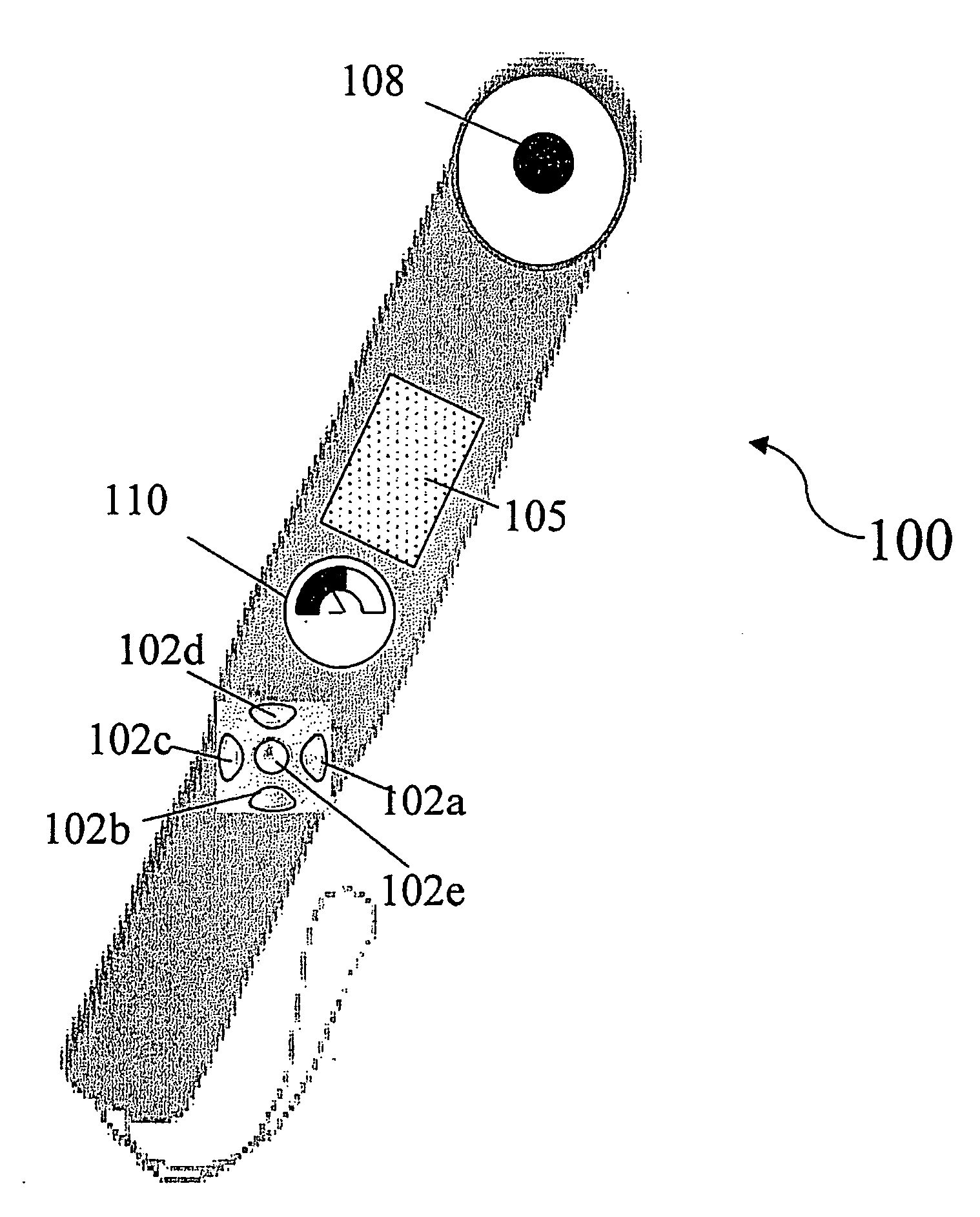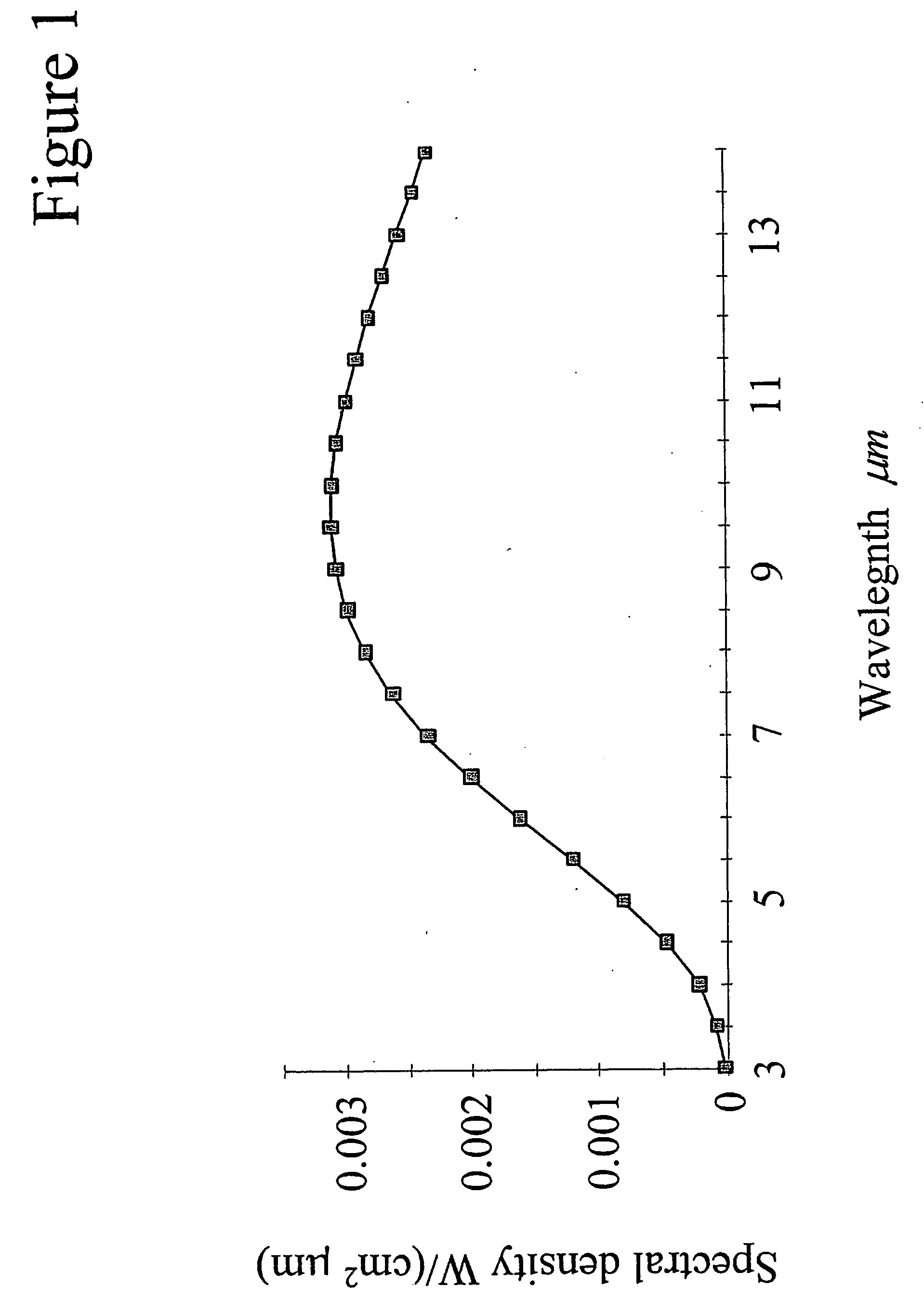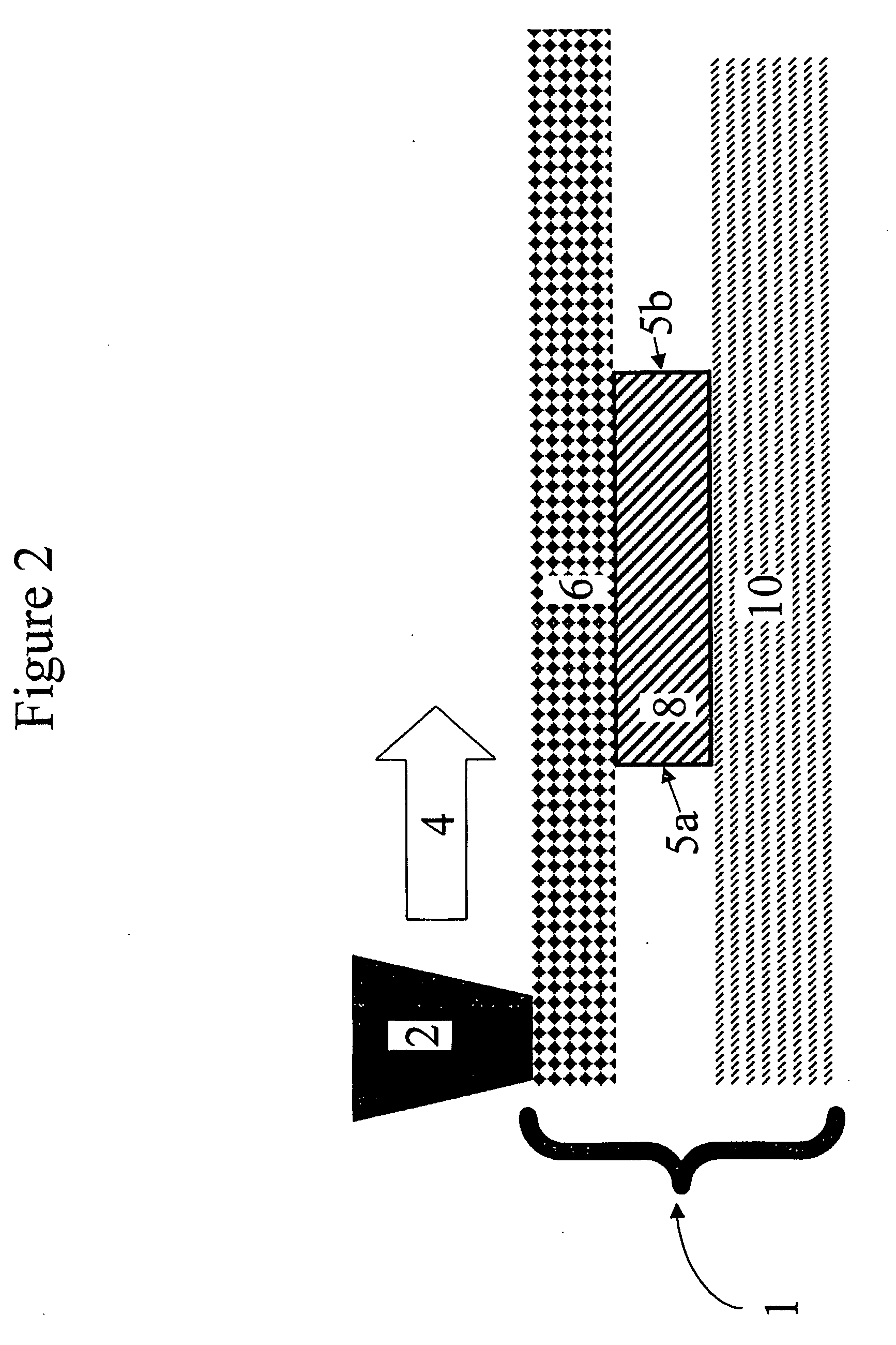Non-invasive method to identify hidden foreign objects near a human subject
a technology of hidden foreign objects and detection methods, applied in the direction of detection/prospecting using thermal methods, material testing goods, instruments, etc., can solve the problems of x-ray and microwave radiation is dangerous to people, and cannot be used to scan objects on or near living humans
- Summary
- Abstract
- Description
- Claims
- Application Information
AI Technical Summary
Benefits of technology
Problems solved by technology
Method used
Image
Examples
first embodiment
[0079]We refer now to FIG. 13, a flow chart of the present invention. In FIG. 13 a security guard is using the scanning device of FIG. 14 to test for a foreign objects. First the guard measures 13 the integral background radiation level (unmodified by the presence of foreign object 8).
[0080]In the embodiment of FIG. 13, a human operator using a hand held instrument 100 (see FIG. 14) measures 13 an integral background radiation level and calibrates for an integral scan 12 by holding the sensor 108 over a part of subject 1, where there is no hidden object and where the radiation emitted by subject 1 is substantially unmodified by foreign object 8. Sensor 108 is a pyroelectric detector. The pyroelectric detector is sensitive to IR radiation in the bandwidth from 5 μm -20 μm. Thus, integral scan 12 measures the average radiation intensity in this wide bandwidth. To measure 13 the background radiation level and calibrate the instrument, the operator first puts instrument 100 into a integ...
second embodiment
[0094]We now refer to FIG. 15, the current invention. The embodiment of FIG. 15 includes multiple sensors assemblies 208a, 208b, 208c, and 208d. Each sensor assembly 208a-208d, is configured to perceive radiation in a different bandwidth. Particularly, sensor assembly 208a is configured to be sensitive to radiation in a wide spectrum from 5 μm-20 μm; sensor assembly 208b is configured to be sensitive to radiation from 4.5 μm-5.5 μm; sensor assembly 208c is configured to be sensitive to radiation from 13.5 μm-14.5 μm; and sensor assembly 208d is configured to be sensitive to radiation from 9.5 μm-10.5 μm.
[0095]The embodiment of FIG. 15 of an instrument 200 is supplied with two buttons, and on-button 202a and a background-calibration-button 202b. When on-button 202a and background-calibration-button 202b are depressed simultaneously, instrument 200 measures and detects a background radiation level simultaneously with all four sensor assemblies 208a-208d and stores a background level f...
third embodiment
[0098]FIG. 16 illustrates an instrument 300 to detect and identify foreign object 8 according to the present invention. A fill body scanner 302 contains sensors configured to scan across a subject 1. Full body scanner 302 may be a simple metal detector, or it may include more sophisticated sensors. If fast conclusive results are important and money is not an object, full body scanner may contain multiple IR sensor assemblies. Full body scan results are sent to a desktop computer 306. Desktop computer 306 conveys an image 308 of subject 1 to a display device 310 (a computer monitor). Also output to the display device 310 is a label 312, showing the state of identification of foreign objects in the vicinity of subject 304. For objects that are not yet fully identified, the operator has a hand scanner instrument 200, which is also integrated to desktop computer 306. Thus, when the operator scans an unidentified object with instrument 200, the output of instrument 200 is registered by d...
PUM
 Login to View More
Login to View More Abstract
Description
Claims
Application Information
 Login to View More
Login to View More - R&D
- Intellectual Property
- Life Sciences
- Materials
- Tech Scout
- Unparalleled Data Quality
- Higher Quality Content
- 60% Fewer Hallucinations
Browse by: Latest US Patents, China's latest patents, Technical Efficacy Thesaurus, Application Domain, Technology Topic, Popular Technical Reports.
© 2025 PatSnap. All rights reserved.Legal|Privacy policy|Modern Slavery Act Transparency Statement|Sitemap|About US| Contact US: help@patsnap.com



